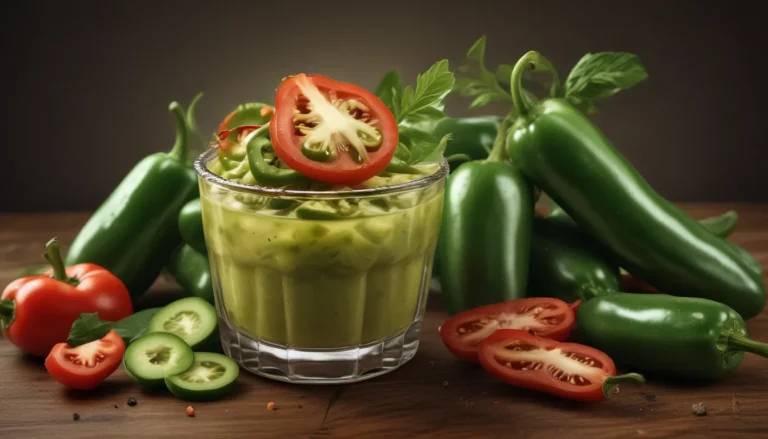The pictures in our articles might not always show exactly what the text is talking about. We use these images to make the article more interesting and eye-catching. They are there to add to the text, but not to replace it or show every detail.
If you're a fan of creamy and indulgent Alfredo sauce, you're not alone. This beloved pasta sauce hails from Italy and has captured the hearts of pasta enthusiasts around the globe. But while its rich and decadent flavor may be irresistible, it's essential to understand its nutritional value and how it fits into a balanced diet. In this article, we'll take a deep dive into the nutrition facts of Alfredo sauce, equipping you with the knowledge to make informed choices about your food. Whether you're a pasta aficionado or simply curious about popular sauces' nutritional content, this article will provide you with an insightful overview of Alfredo sauce's nutritional profile.
Unlocking the Origins of Alfredo Sauce
Alfredo sauce, a creamy and indulgent creation, is made from butter, heavy cream, garlic, and Parmesan cheese. Named after its creator, Alfredo di Lelio, an Italian chef who whipped up the sauce for his pregnant wife to help her regain her appetite, this sauce boasts a rich and velvety texture that pairs perfectly with fettuccine pasta, creating a classic and decadent dish.
Understanding the Nutritional Facts
-
Calories and Fat Content: Due to its ingredients like butter and heavy cream, Alfredo sauce is known for its high fat and calorie content, with a typical serving containing approximately 380 calories.
-
Calcium Content: On the flip side, Alfredo sauce is a good source of calcium, thanks to Parmesan cheese, which plays a crucial role in maintaining healthy bones and teeth.
-
Considerations for Lactose Intolerance: Unfortunately, Alfredo sauce is not suitable for individuals with lactose intolerance or dairy allergies, given its dairy-based ingredients.
Picking the Perfect Pairing
While the classic Alfredo sauce is undeniably delicious on its own, you can elevate its flavor profile by customizing it with additional ingredients. Whether you're adding herbs, spices, or proteins like chicken or shrimp, these enhancements can take your Alfredo sauce to new heights. Moreover, Alfredo sauce isn't limited to being a pasta sauce; it can also be used in various culinary creations like pizza, as a dip for breadsticks, or even as a topping for baked potatoes. Its versatility knows no bounds!
Tips for Storage and Reheating
Once you open a jar of Alfredo sauce, remember to store it in the refrigerator to maintain its freshness and prevent spoilage. And if you happen to have leftovers, fear not! You can easily reheat Alfredo sauce on the stovetop or in the microwave for future indulgent meals.
Making Alfredo Sauce Healthier
If you're looking to enjoy Alfredo sauce with a healthier twist, there are simple swaps and additions you can make. Consider substituting regular cream with Greek yogurt or using a combination of milk and olive oil to reduce the fat content. By making these adjustments, you can savor the decadent taste of Alfredo sauce guilt-free.
Embracing Alfredo Sauce Beyond Pasta
While fettuccine is the go-to pasta for Alfredo sauce, don't limit yourself. This versatile sauce pairs well with a variety of pasta shapes like penne, linguine, or even homemade gnocchi. Its rich and creamy texture provides comfort and joy, making it a dish meant to be shared and enjoyed with loved ones.
Conclusion: Indulge Wisely
In conclusion, Alfredo sauce is a delightful addition to many dishes, offering a richness and flavor that's hard to resist. However, it's crucial to be mindful of its nutritional content. While it can be enjoyed in moderation, keep in mind its high calorie, fat, and sodium levels. By using smaller portions, opting for lighter versions, and incorporating nutrient-dense ingredients, you can strike a balance and enjoy Alfredo sauce as part of a well-rounded diet.
Frequently Asked Questions
-
Is Alfredo sauce healthy?
Alfredo sauce is not considered very healthy due to its high calorie, fat, and sodium content. Enjoy in moderation as part of a balanced diet. -
How many calories are in Alfredo sauce?
The calorie count can vary, but on average, one serving contains around 200-250 calories. -
Are there low-fat versions of Alfredo sauce?
Yes, there are low-fat options available that contain fewer calories and less fat. -
Can Alfredo sauce be made healthier?
Absolutely! Try using low-fat milk, reducing butter, or adding vegetables to improve its nutritional profile. -
Can I freeze Alfredo sauce?
Yes, you can freeze Alfredo sauce for up to three months. Make sure it's completely cooled before storing.
Trust in Our Commitment to Quality
As you embark on your culinary journey with Alfredo sauce, remember that our dedication to delivering accurate and engaging content is unwavering. Each fact shared is contributed by real users like you, ensuring a wealth of insights and information. Count on us for a trusty guide as you explore the world of Alfredo sauce and make informed choices about your food. Enjoy the decadent taste of Alfredo sauce while maintaining a healthy and balanced lifestyle!






